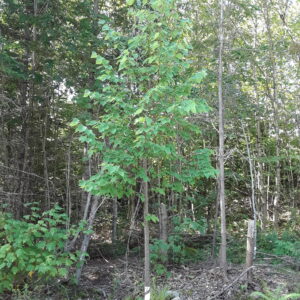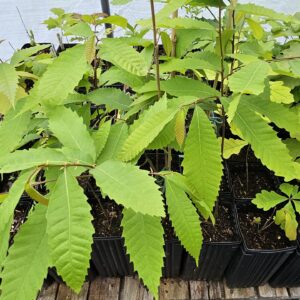Pignut Hickory
(Red Hickory, False Shagbark Hickory)
Carya Glabra
Occurs in a few isolated locations in Southern Ontario. Like all hickory species, it grows slowly and will be better enjoyed by future generations. One of the hardest hardwoods in North America. Unlike the Shagbark Hickory, the nuts are bitter to humans. Tree parts produce a small amount of the chemical juglone that inhibit growth of some plants in the root zone. The quantity of juglone is significantly less than that of a walnut tree. Hickories have both male and female flowers on the same tree and are wind pollinated. Planting two or more trees will improve seed crop quantity through cross pollination. Mast seed crop every 3 to 5 years. Develops a strong taproot that can make it tricky to transplant. The name was derived by colonists that observed their pigs foraging for and feasting on the nuts.
Additional information
| Foliage | Deciduous |
|---|---|
| Locale | Native to North America |
| Height | Medium (30-60ft) |
| Width | Moderate |
| Form | Irregular |
| Growth Rate | Slow |
| Longevity | Long (over 100 years) |
| Hardiness Zones * | 4, 5 |
| Sun Exposure | Full Sun (over 6 hrs), Partial Sun (4 to 6 hrs) |
| Soil Preferences * | Moist, Slightly Acidic, Well Draining |
| Soil Tolerances | Dry, Slightly Alkaline |
| Other Tolerances | Occasional Drought |
| Wildlife Value | Birds (fruits/seeds), Butterfly Larvae (leaves), Large Mammals (fruits/seeds), Small Mammals (fruits/seeds) |
| Human Value | Carpentry (wood), Fuel (wood) |
| Seed Collection | Ordered Online |
| Planting Considerations | Allelopathic, Intolerant of Full Shade, Tricky to Transplant |






